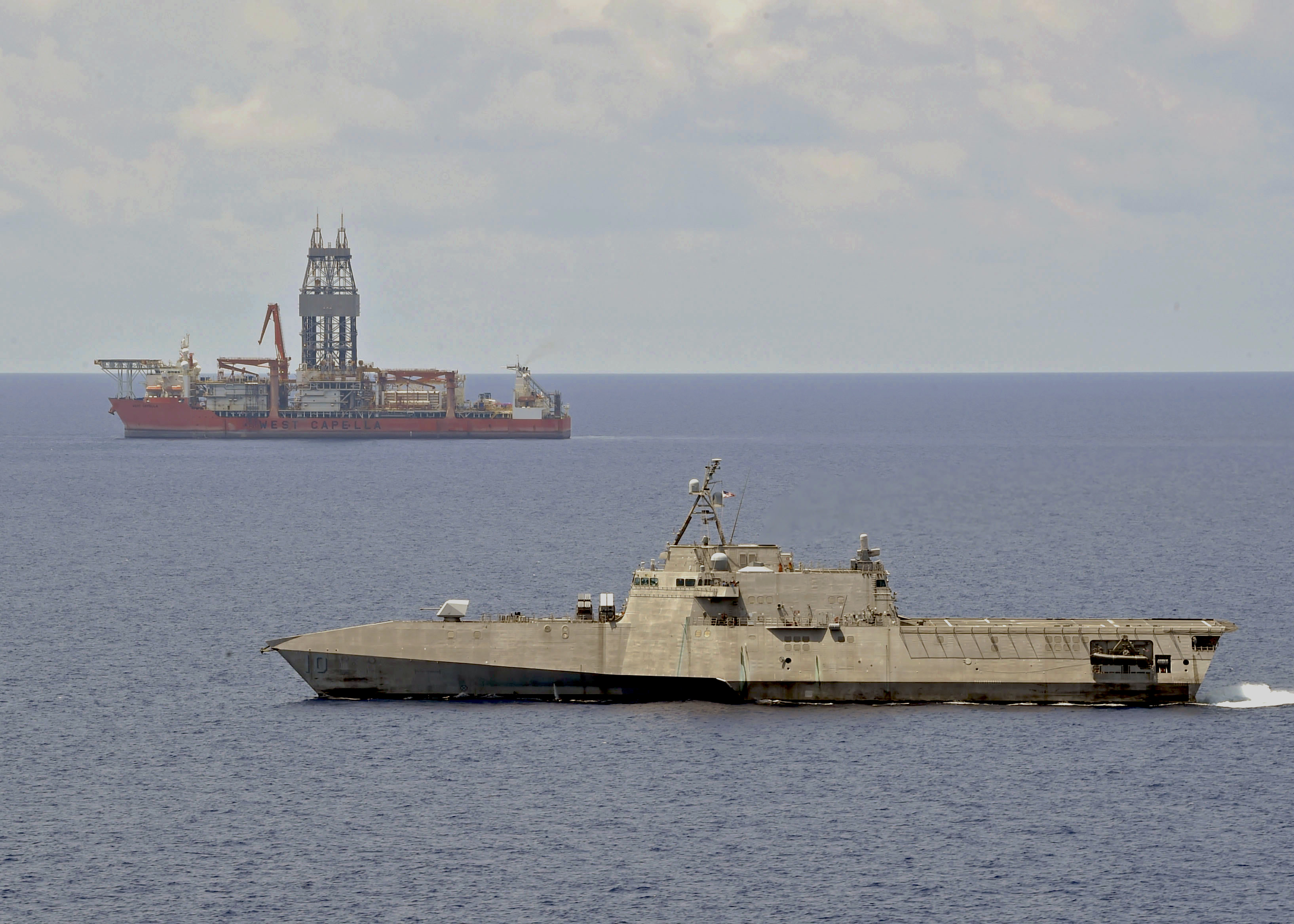
A standoff between China and Malaysia over potential natural gas and oil reserves beneath the South China Sea appears to be ending as research vessels from both nations moved away from each other following stepped-up U.S. Navy presence in the last several weeks.
On Tuesday, West Capella, a Panamanian-flagged drillship hired by Malaysia’s state-owned Petronas, completed its scheduled work in a part of the South China Sea also claimed by Vietnam and China, according to a report by Reuters.
For several weeks this spring, West Capella was tailed by China’s government-owned research vessel Haiyang Dizhi 8 and armed Chinese coast guard and China Maritime Militia vessels, Reuters reported.
To counter the implied threat posed by China’s armed ships, USS Gabrielle Giffords (LCS-10), USS Montgomery (LCS-8) and USNS Cesar Chavez (T-AKE-14) conducted presence operations near West Capella. In late April, USS America (LHA-6), USS Bunker Hill (CG-52) and USS Barry (DDG-52) sailed with the Royal Australian Navy frigate HMAS Parramatta (FFH-154) in the same part of the South China Sea.
“There is no better signal of our support for a free and open Indo-Pacific than positive and persistent U.S. naval engagement in this region,” Rear Adm. Fred Kacher, the commander of Expeditionary Strike Group 7, said in a Navy news release.
As of Wednesday, the Chinese ships appeared heading in a different direction from West Capella and a nearby Malaysian naval auxiliary ship, KA Bunga Mas 5, according to publicly available ship tracking data.
Last year, Haiyang Dizhi 8 was involved in a similar standoff with the Vietnamese drilling ship Hakuryu 5, in Vietnam’s exclusive economic zone near the Fiery Reef, according to a December report by the Asia Maritime Transparency Initiative at the Center for Strategic and International Studies.
The standoff started in June and lasted for months, according to CSIS. During this time, Haiyang Dizhi 8 was escorted by Chinese Coast Guard ships and other Maritime Militia ships. The CSIS report concludes Haiyang Dizhi 8’s survey area “closely matched a group of oil and gas exploration blocks that the China National Offshore Oil Corporation unsuccessfully offered up for foreign bidding in 2012.”
At times, based on satellite imagery and ship positioning information, the Chinese Coast Guard cutters appeared to focus on blocking or impeding the Vietnamese vessel’s operations in the same region, the CSIS report states.
“The 56-meter Vietnamese vessel is effectively unarmed and less than half the size of the 138-meter 5303, one of China’s advanced Type 818 Zhaoduan-class cutters which sports a 76-mm cannon,” the CSIS report states.
For the past several weeks, the U.S. and Australian navies were determined to send a message to China’s government that such actions would not go unnoticed and unchallenged.
“Routine presence operations, like Gabrielle Giffords, reaffirms the U.S. will continue to fly and sail freely, in accordance with international law and maritime norms, regardless of excessive claims or current events,” Vice Adm. Bill Merz, the commander of U.S. 7th Fleet, said in the news release.
“The U.S. supports the efforts of our allies and partners in the lawful pursuit of their economic interests.”





